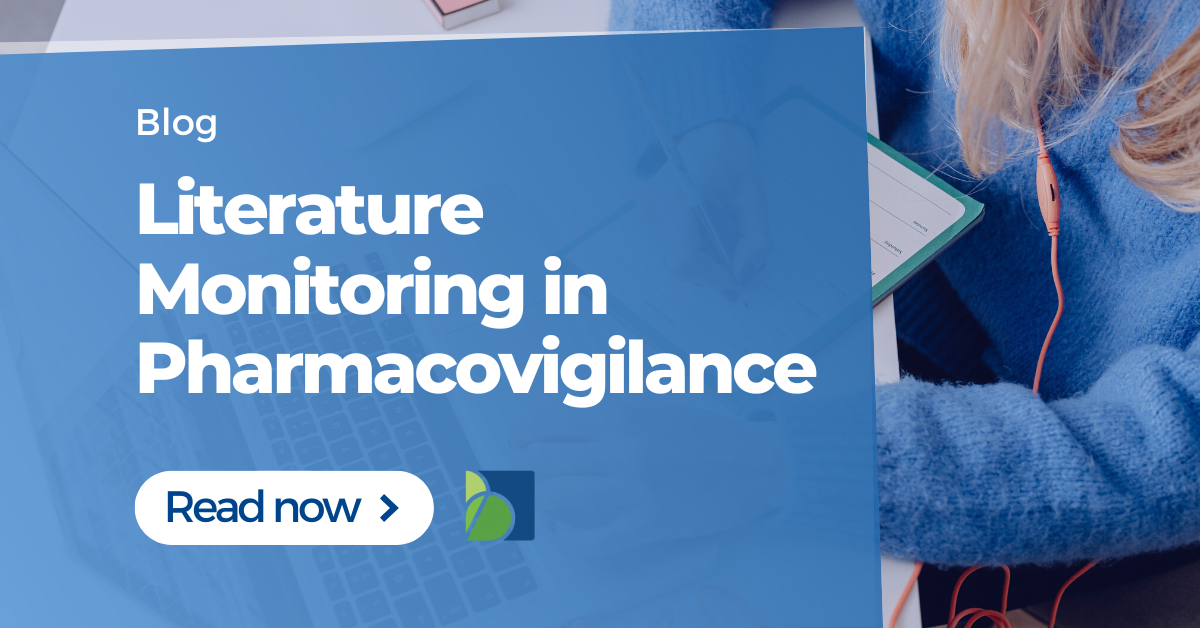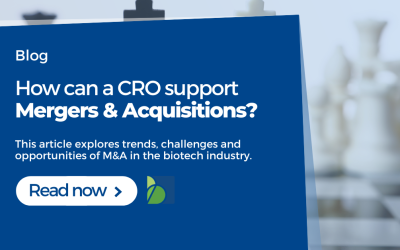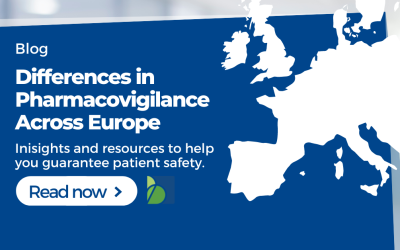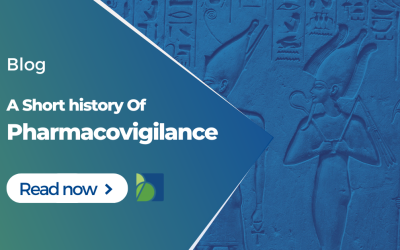Incorporating data from medical and scientific literature is a paramount aspect of patient safety. This wealth of knowledge often constitutes a substantial part of the safety profile of medicinal products. From providing insights on potential side effects to shedding light on different patient experiences, this literature contributes significantly to how we understand and navigate the safety of medical products.
Regulatory bodies hold medicinal products’ marketing authorization holders (MAHs) to a high standard. One key aspect of their responsibility is performing regular scientific literature searches, including unpublished manuscripts and abstracts presented at medical or scientific conferences.
To underscore the importance of literature monitoring in pharmacovigilance, consider that properly conducted searches can lead to important discoveries, timely interventions, and overall improved product safety. On the other hand, inadequate searches can result in missed opportunities, overlooked risks, and in some cases, significant patient harm.
Types of Literature Searches
Literature searches generally fall into two categories. First, exhaustive searches cast a wide net across various databases and resources, capturing a broad spectrum of available literature on a given subject. Second, selective searches focus on specific databases or key publications, often targeting high-impact literature.
Exhaustive Searches
Exhaustive searches, or systematic reviews, aim to include all available evidence on a specific research question. This involves extensive searching of several databases, websites, and sometimes even manual searching of journals and books to ensure no relevant study is overlooked.
The exhaustive search is labor-intensive and requires a clear understanding of the topic and complex search strategies. However, the end result is a comprehensive overview of the literature, including studies of all levels of quality and size. This approach is often used when performing meta-analyses, where the results of several studies are combined to provide a more definitive answer to a research question.
Selective Searches
On the other hand, selective searches are more focused and usually target specific databases or key publications. Instead of casting a wide net, selective searches aim at catching ‘big fish’, which refers to high-impact literature that has the potential to change practices or policies.
This method requires knowledge about the topic and the ability to discern the importance of different pieces of literature. The targeted databases or journals often have high impact factors, meaning their published works are frequently cited in other research. While less comprehensive than exhaustive searches, selective searches are quicker and more feasible in certain circumstances, especially when time is limited.
The choice between the two depends on the research question, the project’s scope, and the available resources.
Global vs. Local Literature Searches
When conducting research, you might come across the terms ‘global literature search’ and ‘local literature search.’ Understanding the differences between these two methods can significantly influence the depth and breadth of the findings of a research project. Let’s dive into the characteristics that distinguish global and local literature searches.
Global Literature Searches
Global literature searches are broad and comprehensive. They seek to capture the full scope of existing research on a topic, regardless of the geographical origin of the data or the research institution. Global searches often employ multiple databases and resources, not limited to any specific country or region.
A global literature search intends to gather information from diverse sources, giving researchers an extensive understanding of the subject matter. This approach offers several benefits, including a broad perspective on the topic, a wide range of data, and the inclusion of different cultural, geographical, and socioeconomic contexts. However, it may require more time and resources due to the vast amount of information that needs to be reviewed and analyzed.
Local Literature Searches
Local literature searches, on the other hand, are more focused and region-specific. They center on information from a particular area, country, or group of countries. Researchers may use region-specific databases, local libraries, government reports, and documents from local institutions in a local literature search.
This search type is beneficial when the research question pertains to a particular region or population. Considering local conditions, policies, and cultural practices can provide more context-specific information. However, a local literature search may offer a more limited perspective and overlook globally relevant findings.
In conclusion, choosing between a global or local literature search depends on your research objectives. Both have merits and can be used effectively to gather relevant information. Sometimes, combining both may be the best approach to ensure a comprehensive literature review.
Literature Search Strategies
One does not simply dive into literature searches; it requires a strategy. An effective literature search strategy is one that is constructed to ensure the optimum retrieval of the most relevant articles. This includes identifying the right keywords, knowing the databases to target, and being able to discern the value and relevance of different pieces of literature.
Embarking on a literature search is a bit like setting off on a treasure hunt. In this case, the treasure is the relevant, high-quality literature on your subject of interest. And, like any good treasure hunt, success lies in having a solid strategy. Here’s a closer look at the components of an effective literature search strategy.
Identifying the Right Keywords
Your search for literature starts with the right keywords. Keywords are the terms that best represent the core concepts of your topic. Brainstorming a comprehensive list of keywords covering various aspects of your subject is essential. Using a combination of broad and narrow terms can be beneficial. Moreover, consider synonyms, alternative spellings, acronyms, and both your keywords’ singular and plural forms.
Using Boolean Operators
Boolean operators—AND, OR, and NOT—are the glue that holds your search together. They allow you to combine or exclude keywords in a way that focuses your search. For example, using AND narrows your search (e.g., “diabetes AND children”), using OR broadens it (e.g., “children OR adolescents”), and using NOT helps eliminate irrelevant results (e.g., “diabetes NOT type 2”).
Knowing the Databases to Target
Different databases host different types of literature. For example, PubMed is excellent for biomedical literature, while IEEE Xplore is better suited for engineering and technology literature. Knowing the appropriate databases to target for your subject matter can significantly increase the relevancy of your search results.
Understanding Search Filters
Most databases provide options to filter your search results. Filters can be applied based on the publication date, language, study type, and more. Utilizing these filters can help streamline your search results, making finding the most relevant literature easier.
Appraising the Value and Relevance of Literature
Finally, having retrieved a list of literature, it’s important to appraise each article for its value and relevance to your research question. Look at the credibility of the authors, the methodology used, and whether the article’s conclusions are supported by the data presented.
In summary, a well-constructed literature search strategy is like a roadmap guiding you to the most relevant and valuable literature for your research. Developing can take time and patience, but the rewards are well worth the effort.
Implications of Inadequate Literature Searches
The importance of thorough literature searches becomes clear when we consider the implications of inadequate ones. Inadequate searches can lead to a lack of crucial information, causing potential risks to patient safety, regulatory repercussions, and even damaging the reputation of the MAH.
When to Start Literature Searches
The ideal time to start literature searches is early in product development. This allows for the early identification and management of potential risks. However, these searches must continue post-launch to stay abreast of the latest research and findings related to the product.
Regulatory Requirements for Literature Monitoring In Pharmacovigilance
In the realm of patient safety and medicinal products, regulatory requirements play a vital role. MAHs are expected to abide by specific protocols, including regularly and thoroughly searching the scientific literature. Compliance with these requirements is not only necessary for maintaining their licensing but also for ensuring patient safety and the overall integrity of the medical product.
Guidance from FDA and EMA on Literature Monitoring In Pharmacovigilance
Both the FDA (Food and Drug Administration) in the United States and the EMA (European Medicines Agency) provide guidance on literature monitoring in the realm of pharmacovigilance.
The FDA’s guidance on the subject can be found in various documents provided by the agency. These documents provide comprehensive information on how to conduct effective and thorough literature searches. A crucial resource is the FDA’s Guidance for Industry, which provides detailed instructions and recommendations on good pharmacovigilance practices, including literature monitoring.
FDA Guidance for Industry
Meanwhile, the EMA also provides extensive guidance on literature monitoring. Their Good Pharmacovigilance Practices (GVP) guidelines, particularly Module VI on the management and reporting of adverse reactions to medicinal products, outlines the responsibilities of MAHs in regards to conducting literature searches. This module addresses the scope and frequency of literature searches, the criteria for selecting data sources, and how to report findings.
EMA Good Pharmacovigilance Practices (GVP)
These guidelines provided by regulatory bodies are not just recommendations; they form a part of the regulatory requirements for MAHs. Therefore, understanding and adhering to them is crucial in ensuring compliance and maintaining the safety profile of medicinal products.
Always remember to review these documents regularly, as the regulatory landscape evolves, and guidelines can be updated. This helps to ensure that your literature monitoring activities align with the most recent regulatory requirements and best practices.
Conclusion
Effective and comprehensive literature searches form a cornerstone of patient safety data. They allow MAHs and regulatory bodies to gather crucial information about medicinal products, offering valuable insights that contribute to their safety profiles. The importance of conducting these searches early and regularly, and the potential consequences of inadequate searches, underscore the need for rigorous and strategic literature review processes.















